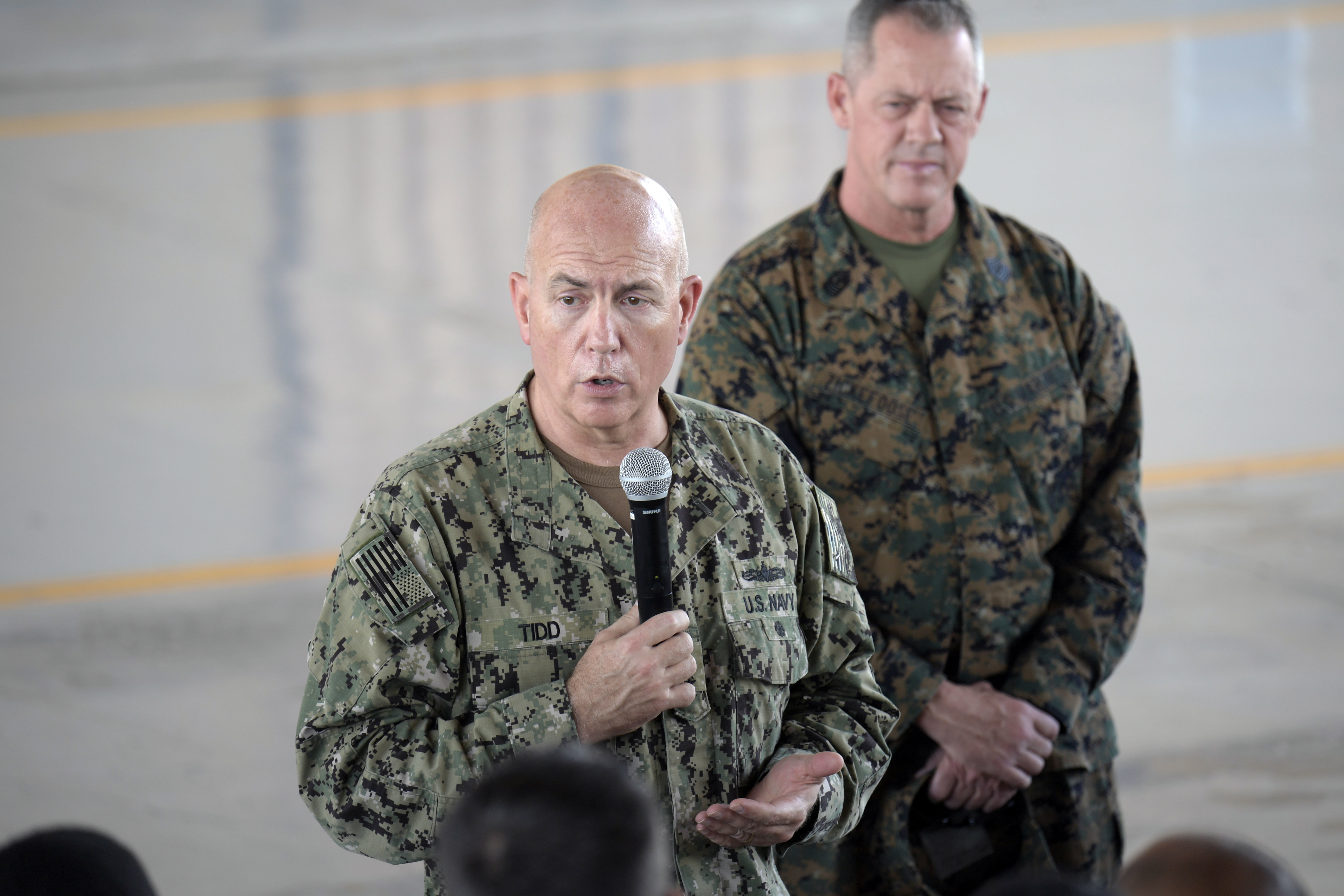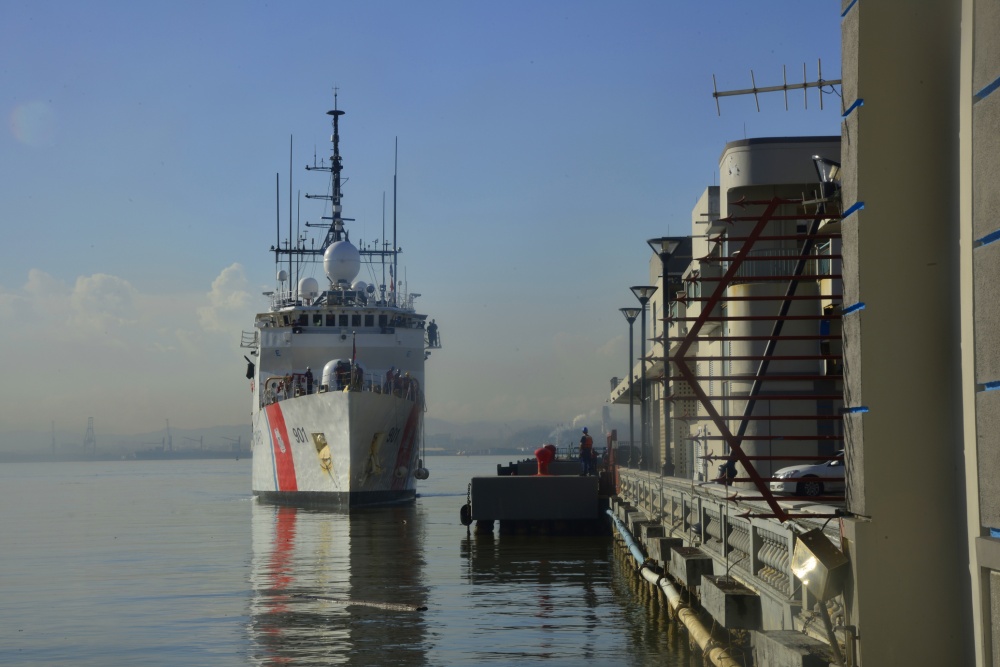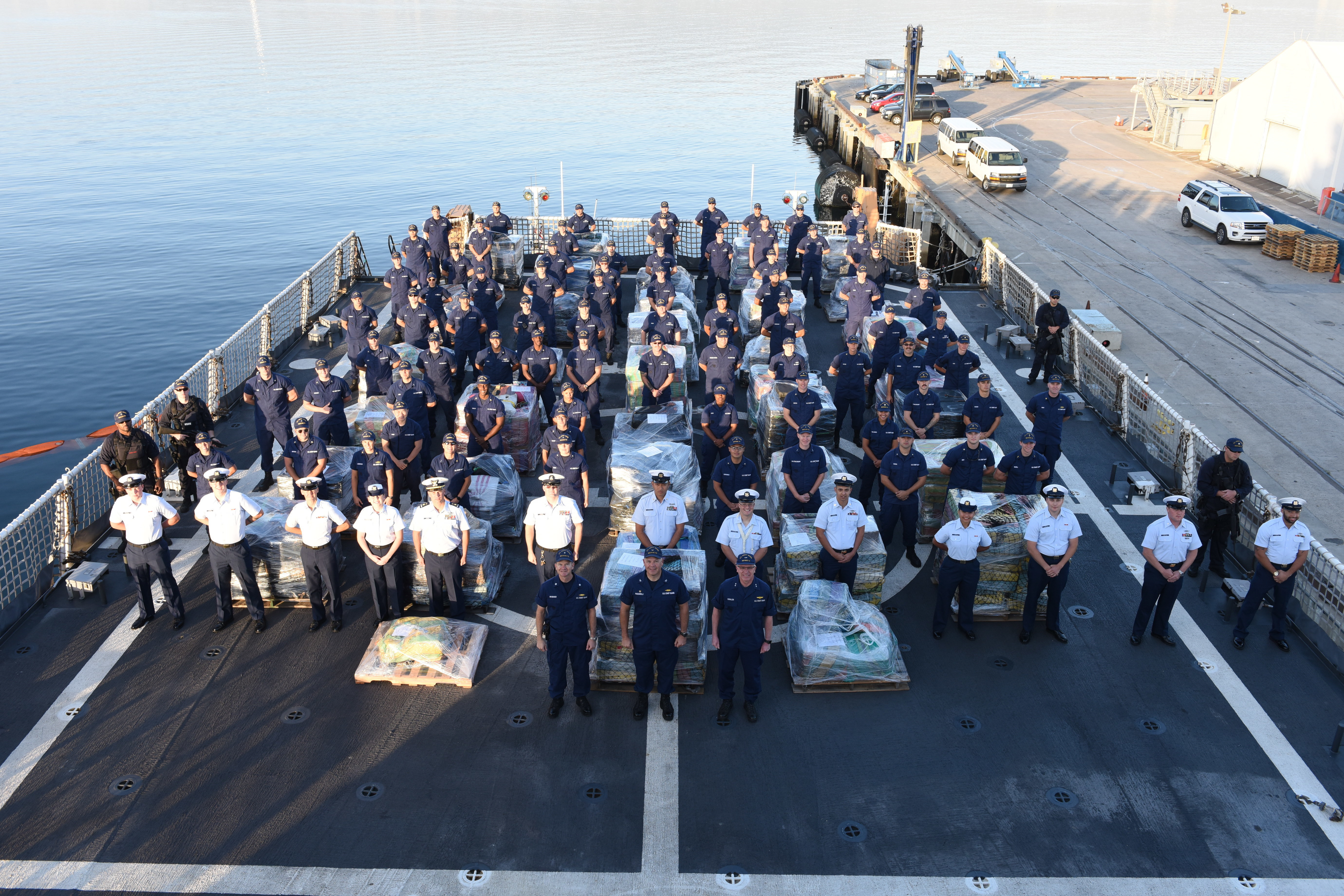
The Southern Command’s top officer told the Senate Armed Services Committee he is receiving only a fraction of the intelligence, surveillance and reconnaissance resources he needs to stem the flow of illegal rugs, people and money into the United States.
Adm. Kurt Tidd, testifying Thursday, added that lack of ISR translates into interdicting only 25 percent of the known movement of narcotics.
“We’re not talking about Brigade Combat Teams and aircraft carriers” to better carry out the command’s mission over a region that stretches from Central America to the tip of South America. He said it means special operations teams working with security forces on land and the presence of Coast Guard Medium Endurance Cutters on the seas.
Several times during the hearing, Tidd stressed the need for re-capitalizing that part of the Coast Guard’s fleet. “The cop on the beat is the Medium Endurance Cutter.” He added a number of these vessels were laid down in the 1960s.
As the hearing was nearing its end, he added, the Littoral Combat ship would work well in the interdiction mission with its helicopter and boats in combination with maritime patrol aircraft.
As for adding unmanned aerial systems to increase ISR capabilities in the region, Kidd acknowledged, “There are some challenges to employing them,” but did not identify what the challenges were. The Coast Guard operates law enforcement duties through agreements with individual nations, and UAS operations may not be covered in existing pacts.

“We have pretty good situational awareness” of illegal trafficking on the “known tracks” used by criminal networks, but that is a limited view, Tidd said. He told the committee that trafficking in opioids differs from routes used to move marijuana and cocaine into the United States. “We’ve got to do business differently.” In that regard, he said the command hosted a conference last week in Miami to work out details on how to address the epidemic that involved the Defense, Homeland Security, Justice, Treasury and State Departments.
In looking at one drug’s trafficking route, rather than cocaine coming largely from Colombia, the Drug Enforcement Agency lists China as a manufacturer of finished and precursors for fentanyl and China and Mexico as prime sources for cross-border shipping.
“There is no single silver bullet,” he said in answer to a question about stopping every truck from Mexico entering the United States to search for opioids and other drugs.
Looking specifically at the security challenges in Venezuela where he said a humanitarian crisis is in progress. Tidd said the government of President Nicolas Maduro is “significant concern” to its neighbors. An estimated 500,000 Venezuelans have fled the country as food scarcity increases and medical care deteriorates straining Colombia, Brazil and the island nations closest to it to meet those needs.
The impact on Colombia, which has received the largest number of refugees, goes beyond strains on its health care system and housing. He said Bogota fears refugees with dual citizenship could skew its coming elections by voting there. Colombia’s government recently reached a peace agreement with leftist guerrillas ending a 50-year civil war that claimed hundreds of thousands of lives.
What is also “a matter of concern” to the command is “we see significant presence of Cuban advisers to [the Venezuelan] security force.” This is coupled with continuing political and economic interest in Caracas from Russia and China to keep Maduro in power.

Tidd said he is working military-to-military connections in the region to disprove Moscow’s and Beijing’s claim that “we are disengaging from the Americas.” He told the committee that China, as it has in Africa, is making large investments in an effort to extend its influence and show the United States’ indifference.
“Anything that we can do to show we are reliable is important,” he said.
Tidd also expressed support for a number of programs funded by the State Department but executed by the Department of Defense, such as the International Military Education and Training initiative.
“It is a small pie to begin with,” he said referring to the State and Defense Department budgets for these programs. “The challenge is to make our small piece of the pie go as far as possible.”
As it has been investing economically, China also has recently been inviting military officers from Central and South America to study there as another way of making its presence felt in the area.
“Absolutely priceless” was the way he described the international military training program’s value to the United States.
The State Department is facing a 30 percent cut in its Fiscal year 2019 budget request, several senators of both parties noted during the hearing.





